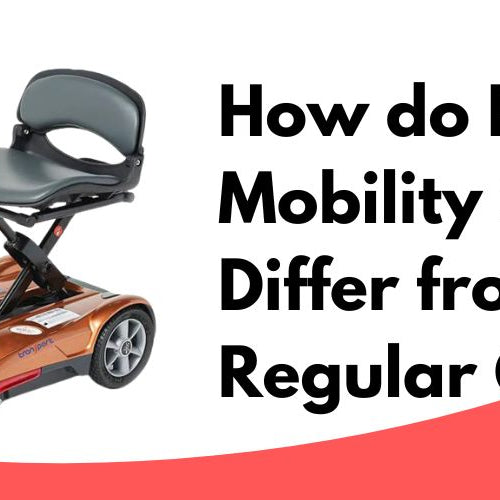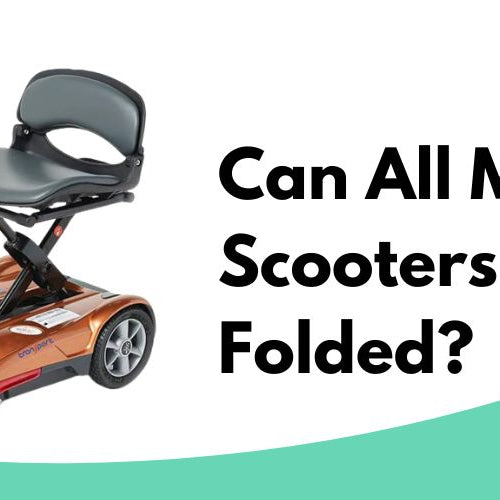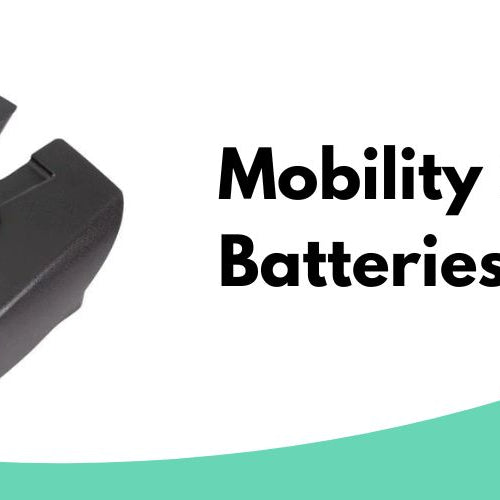Medicare coverage for patient lifts is an important topic to discuss, especially for individuals who require assistance with mobility due to various health conditions. If you've ever wondered whether Medicare covers patient lifts, it's crucial to understand the specific requirements and conditions under which this coverage is provided. This article will delve into the essential details you need to know in order to determine if Medicare coverage for patient lifts is available to you or your loved ones.
Medicare Part B offers coverage for patient lifts as durable medical equipment (DME) if a doctor prescribes it for use in the patient's home. However, before Medicare contributes to the cost, certain conditions must be met, such as meeting the Part B Deductible. Following this, patients typically pay 20% of the Medicare-approved amount if the chosen supplier accepts the Medicare assignment. It is also important to note that Medicare may cover a portion of the cost for manual full-body or stand-assist lifts when prescribed by a Medicare-enrolled physician and purchased from a Medicare-enrolled supplier.
Additionally, Medicare Part C, commonly referred to as Medicare Advantage plans, might offer coverage for lift chairs in certain situations. These plans can have varying yearly limits on out-of-pocket costs for medical services, and it's essential to research and compare plans to find the best option for your individual needs. Keep these coverage intricacies and conditions in mind when exploring Medicare's policies on patient lifts to ensure you make informed decisions to aid in maximizing mobility and improving overall quality of life.
Does Medicare Cover Patient Lifts
Medicare Part B
Medicare does cover patient lifts under certain conditions. To be eligible for coverage, the lift must be prescribed by a doctor as necessary for the patient's needs. Medicare Part B (Medical Insurance) will cover patient lifts as durable medical equipment (DME) used in the home. After meeting the Part B deductible, the patient is responsible for paying 20% of the Medicare-approved amount, provided that the supplier accepts assignment.
Durable Medical Equipment
A patient lift falls under the category of Durable Medical Equipment (DME), which is covered by Medicare Part B. Coverage for DME, including patient lifts, requires the equipment to be:
- Medically necessary for the patient
- Prescribed by a Medicare-enrolled doctor or healthcare provider
- Ordered for use in the patient's home
Depending on the specific patient lift prescribed, coverage might be partial or full. For example, full-body or stand-assist patient lifts are partially covered by Medicare if prescribed by a doctor. To obtain coverage, patients must work with their healthcare provider to get a prescription for the lift.
In addition to patient lifts, Medicare Part B covers other DME items such as blood sugar meters, blood sugar test strips, walkers, and wheelchairs. The coverage requirements for these items are similar to those for patient lifts.
It's essential for patients to work closely with their healthcare providers and suppliers to ensure they follow the necessary steps to obtain coverage for their patient lift or other durable medical equipment.
Types of Patient Lifts Covered
Manual Lifts
Manual patient lifts are one type of lift that Medicare Part B usually covers, provided that the beneficiary meets certain requirements. These lifts are operated by hand, requiring physical effort from the caregiver to transfer the patient. Manual lifts can be useful for those who require occasional assistance or have limited mobility. To qualify for coverage, the patient must need assistance for transfers between bed, chair, wheelchair, or commode, and without the lift, the beneficiary would be bed confined (source).
Electric Lifts
Electric patient lifts, also referred to as powered lifts, operate using a motor to lift and transfer patients. These lifts are typically more expensive than manual lifts, but can be helpful when caregivers have limited strength or when patients require frequent transfers. Medicare Part B may cover electric patient lifts if the same basic coverage criteria as manual lifts are met, which includes transfer needs and potential bed confinement without the use of a lift (source).
Specialty Lifts
In addition to manual and electric lifts, there are specialty patient lifts designed for specific situations, such as stand-assist lifts and bathtub lifts. Medicare may cover these specialty lifts under certain circumstances. A stand-assist lift, for instance, could be partially covered if prescribed by a doctor and has been deemed medically necessary. Bathtub lifts, on the other hand, may not be covered as they are often considered convenience items rather than essential medical equipment.
To obtain coverage for a patient lift through Medicare, it's essential to work closely with your doctor, who can provide the necessary documentation and prescription. Keep in mind that the beneficiary will likely need to pay 20% of the Medicare-approved amount after meeting the Part B deductible, and this percentage can vary depending on whether the supplier accepts assignment.
Eligibility Criteria
Medical Necessity
Medicare may cover patient lifts for individuals who require assistance transferring from one surface to another, such as from a bed to a chair, due to medical conditions or limited mobility. It's important to keep in mind that Medicare will only cover patient lifts if they are deemed medically necessary by a healthcare professional. To determine medical necessity, a thorough evaluation of the individual's health condition, functional limitations, and specific needs will be taken into account. If the patient lift is not deemed essential to the individual's well-being, Medicare may not provide coverage for the device.
Doctor's Prescription
A doctor's prescription is required for Medicare to cover a patient lift. The prescription must include a detailed justification for the need for a patient lift, evidence of the individual's medical condition, and an explanation of how the lift will benefit the patient's overall health and well-being. It's essential for the individual to have regular consultations with their healthcare provider to ensure the prescription remains up-to-date and accurate.
When selecting a patient lift, it's important for the individual and their healthcare provider to consider various factors such as the individual's physical capabilities, the specific type of patient lift needed, and whether the lift will be used in a home or healthcare facility setting.
The decision to prescribe a patient lift will ultimately be made by the individual's healthcare provider based on their medical condition, needs, and other factors. However, obtaining the prescription is a crucial step for individuals seeking Medicare coverage for patient lifts. Once the prescription is obtained, the individual may proceed with selecting a suitable patient lift and coordinating with Medicare for coverage.
To summarize, Medicare may cover patient lifts for individuals who require them due to medical necessity as determined by a qualified healthcare professional, and if a doctor's prescription is provided. It's important for individuals to communicate with their healthcare providers regularly to ensure proper documentation is in place and to select the most suitable patient lift for their specific needs.
Purchasing Process
When it comes to determining if Medicare covers patient lifts, it's essential to understand the purchasing process. This section will guide you through finding a Medicare-approved supplier and deciding between renting and purchasing a patient lift.
Finding a Medicare-Approved Supplier
To ensure that you receive the appropriate coverage for a patient lift, it is vital to find a supplier that is enrolled in Medicare. Choosing a supplier not enrolled in the program may result in Medicare not covering any claims submitted by that provider. Begin your search by visiting the Medicare Supplier Directory and selecting the appropriate location and equipment type. Carefully review the list of suppliers in your area and ensure they are Medicare-approved before moving forward with purchasing or renting a lift.
Renting vs. Purchasing
Once you've found a Medicare-approved supplier, it's time to decide between renting or purchasing a patient lift. The decision may depend on a few factors, including:
- The duration of need: If the lift is required for a short period, renting may be more cost-effective.
- Financial considerations: Purchasing a lift may be more expensive upfront, but may save money in the long run if the need is long-term.
- Maintenance and repairs: Renting a lift may include maintenance and repair services, providing peace of mind in case of breakdowns.
- Available coverage: Your specific Medicare plan may influence your decision. For example, Medicare Part C, known as Medicare Advantage plans, might cover lift chairs as part of their service.
Keep in mind that ultimately, Medicare will only help cover a motorized chair lifting device if it is prescribed by your doctor and provided through a Medicare-enrolled DME (Durable Medical Equipment) supplier. Ensure you discuss your needs with your healthcare provider and explore your Medicare policy to make an informed decision about renting or purchasing a patient lift.
Financial Responsibility
Co-Payment and Deductibles
Medicare Part B covers patient lifts as durable medical equipment (DME) for use in one's home when prescribed by a doctor. However, there are some financial responsibilities for the patient. After meeting the Part B Deductible, the patient pays 20% of the Medicare-Approved Amount for the equipment if the supplier accepts assignment. The assignment means that the supplier agrees to accept Medicare's approved amount as full payment, and this can significantly affect the out-of-pocket costs for the patient.
It's important to approach suppliers that accept Medicare assignment to ensure the costs remain within the 20% co-payment limit. If a supplier doesn't accept the assignment, they can charge up to 15% over the Medicare-approved amount, but no more than that.
Additional Financial Assistance
For patients who may need extra financial assistance, there are options available. Medicare Savings Programs (MSP) can help cover costs like premiums, deductibles, and co-payments, depending on the specific program. Eligibility for an MSP depends on one's income, and applying for these programs is done through individual state Medicaid offices.
Another option for financial assistance is the Extra Help program, which supports low-income individuals in covering prescription drug costs. This program can decrease copayments and deductibles, and may even completely eliminate premiums for some eligible people.
Patients can explore additional financial assistance options by contacting their State Health Insurance Assistance Programs (SHIP). SHIP offers free and personalized counseling on Medicare benefits, helping people find the best options that suit their needs and financial situation.
In summary, while Medicare does cover patient lifts, there are some financial responsibilities involved. These include co-payments and deductibles, and it's essential to choose suppliers who accept Medicare assignment to manage costs. For those who need extra support, there are financial assistance programs available to help with these expenses.
Does Medicare Cover Patient Lifts?
Medicare provides coverage for patient lifts if they are deemed medically necessary by a doctor for use at home. These devices fall under the category of durable medical equipment (DME) that assists in the patient's mobility and support. To qualify for coverage, a doctor must prescribe the lift, and it should meet some specific criteria.
Frequently Asked Questions
How does Medicare cover patient lifts?
Medicare Part B covers patient lifts as durable medical equipment (DME). If your healthcare provider prescribes a patient lift to be used in your home, Medicare will cover the cost under Part B benefits. You will be required to meet the Part B Deductible, after which you pay 20% of the Medicare-approved amount if your supplier accepts assignment.
What are my payment options for patient lifts?
Medicare gives you the choice to either rent or purchase the equipment. If you decide to rent the lift, Medicare will take care of 10 months of the rental fees. After that period, you have the option to buy the lift if you need to continue using it. Keep in mind that you will still be responsible for 20% of the total cost.
What types of patient lifts are covered by Medicare?
There are various types of patient lifts available, such as manual, electric, and hydraulic lifts. Medicare covers those that are considered medically necessary by your doctor and prescribed for home use. It is essential to consult with your healthcare provider to determine which type of lift is best suited for your unique needs and situation.
Does Medicare cover other mobility assistive devices?
Yes, Medicare covers a wide range of mobility assistive devices apart from patient lifts. Some examples include:
- Wheelchairs and power-operated vehicles (scooters)
- Crutches
- Walkers
- Canes
Just like the patient lifts, these devices must be prescribed by your doctor as medically necessary for use at home. The same cost-sharing and eligibility requirements apply.
Understanding Medicare's coverage for patient lifts and other mobility assistive equipment can be crucial for patients requiring support at home. By staying informed and discussing options with your doctor, you can navigate through the available choices and find the best solution for your needs.
Interested in purchasing a patient lift? Check out Mobility Nest. We offer the lowest price of lifts, guaranteed!






Leave a comment